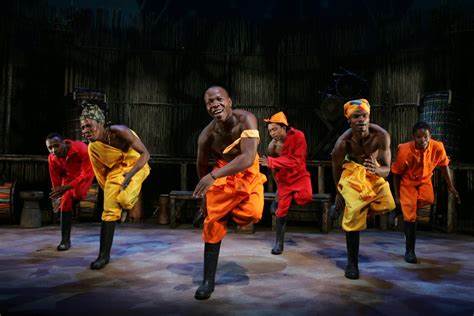South Africa is a culturally rich nation, known for its vibrant traditions and diverse heritage. Dance plays a significant role in the country’s cultural expression, and traditional dances are an essential part of South African celebrations and rituals. From energetic footwork to graceful movements, these dances showcase the unique history and traditions of different South African communities. In this article, we will explore the top five South African traditional dances that continue to captivate audiences with their rhythm, passion, and storytelling.
- Gumboot Dance (Isicathulo): Originating in the gold mines of Johannesburg, the Gumboot Dance, also known as Isicathulo, is a powerful and rhythmic dance form. It evolved as a way for miners to communicate and express themselves while working in harsh conditions. Dancers wear Wellington boots and use their feet and hands to create intricate rhythms by stomping, slapping, and clapping. The dance tells stories of resilience, camaraderie, and protest, often accompanied by singing and chanting.
- Zulu Dance (Indlamu): The Zulu Dance, or Indlamu, is a traditional dance of the Zulu people of South Africa. It is characterized by strong footwork, vibrant costumes, and rhythmic chanting. Dancers, both male and female, showcase their agility and strength through high kicks, stomps, and leaps. The dance is often performed during weddings, celebrations, and cultural events, symbolizing bravery, unity, and cultural pride.
- Xhosa Dance (Ukuxhentsa): Ukuxhentsa, a traditional Xhosa dance, is a lively and energetic dance form performed by the Xhosa people of South Africa. It is a celebratory dance that involves rapid footwork, expressive movements, and vibrant attire. Dancers often use umbrellas, sticks, or shields as props, enhancing the visual spectacle. Ukuxhentsa is performed on various occasions, including weddings, initiations, and community gatherings, embodying joy, vitality, and the Xhosa spirit.
- Tswana Dance (Setapa): Setapa is a traditional dance form that originates from the Tswana people of South Africa. It is a group dance characterized by synchronized movements, clapping, and singing. Dancers create intricate patterns and formations while maintaining a rhythmic harmony. Setapa is often performed during social gatherings, weddings, and festivals, representing unity, community spirit, and the Tswana cultural identity.
- Venda Dance (Tshikona): Tshikona is a traditional dance of the Venda people of South Africa. It is a captivating dance performed by both men and women, accompanied by lively drumming and singing. Tshikona involves graceful movements, elaborate costumes, and intricate footwork. The dance often incorporates storytelling elements, portraying historical events and cultural traditions. Tshikona is performed during important ceremonies and events, showcasing the Venda community’s rich cultural heritage.
These top five South African traditional dances offer a glimpse into the country’s diverse cultural landscape. They reflect the history, values, and traditions of different South African communities, connecting people through rhythm, movement, and storytelling. From the powerful rhythms of the Gumboot Dance to the graceful elegance of Tshikona, these dances continue to inspire and entertain audiences worldwide, preserving and celebrating South Africa’s rich cultural heritage.



